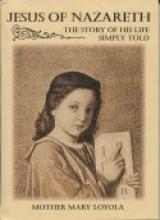No name
J.R.R. Tolkien
Michael Coren skillfully recounts Tolkien's life - growing up as an orphan, his lasting interest in language and learning and his battle experience in World War I. All the way through he includes interesting and enlightening details - especially ones that we will recognize as relevant to Tolkien's stories. Despite the secular publisher, Tolkien's faith is discussed in some detail (and quite fairly) with Joseph Pearce's book, Tolkien: Man and Myth, (Ignatius Press) featured as a prominent source. Coren does include brief summaries of the Hobbit and the Lord of the Rings which include some real plot-spoilers for those who haven't yet read them (they also aren't the most accurate book summaries I've ever read). I would suggest reading this biography after already having read The Hobbit and the Lord of the Rings. Although intended for youth reading, the story is delightful and interesting for adults (as well as a nice quick read).
Jamberoo Road
Jane's Historic Military Aircraft: Recognition Guide
I searched for such a guide unsuccessfully for a year or more before I happened to visit the Smithsonian National Air and Space Museum in Washington D.C. where I came upon this little gem in the gift shop.
This 5" x 7 1/2" guidebook has a friendly size and tough binding for little hands. (We've had ours for over two years and it has held up very nicely.) It organizes the aircraft into five categories: World War I, Inter-War, World War II, Postwar and Helicopters. The categories are easy to find with color bars alongside each left-hand page. The book was written in the U.K. and thus does not focus on various smaller wars since World War II, but the "Postwar" and "Helicopter" segments do include some information about the Korean and Vietnam Wars. Also keep in mind that this is a guidebook for "Historic" Aircraft and thus does not include aircraft that is in use by military today.
Each two page spread includes a fact page on the lefthand side and a full-color photo of a restored or replica airplane that is in flying condition. The fact page includes a paragraph explaining the aircraft's history and features along with detailed specifications: name, type, accomodation, dimensions, weight, speed, range, first flight date, etc.
The book is a little expensive (around $25) and not an absolutely essential ingredient in the study of history, but we've found it to be a really nice supplement. It might make a great Christmas or Birthday present for your young World War II buff.
Jerome Lejeune: Saintly Geneticist
A wonderful book that integrates faith and science!
Ana Braga-Henebry and Anita Barghigiani have created an engaging book about Venerable Dr. Jerome Lejeune, the father of modern genetics. This lovely book is instructive for all ages! The book includes a timeline of important events in the life of Dr. Lejeune with dates and photographs from pivotal moments in his life. The author shares the story of Dr. Lejeune's childhood, his marriage, and his work as a pediatrician.
As a researcher, Dr. Lejeune worked hard to discover the genetics underlying Down syndrome and other genetic conditions. This book is an inspiring story of faith and excellence in scientific research. The book seamlessly integrates the true story of a faithful Christian man who understood the importance of both faith and science.
Our own Ana Braga-Henebry is this lovely new book's author!
Also see our review of Life is a Blessing, a biography of Dr. Lejeune for high school students and adults.
Jesse Tree Ornament Kit from Illuminated Ink
Jesus and I
Jesus and I is organized into very short lessons that lend themselves to direct, oral teaching and discussion. It is designed to be used BY the teacher WITH the student, not by handing the book to the student to read and fill in answers by himself. The book begins with several pages of prayers that we should know by heart. The lesson titles are phrases from these prayers, and the lesson content explains that particular phrase. For example, the lesson titled "Angel of God, my guardian dear" explains Catholic teachings on angels. The lesson titled "And blessed is the fruit of thy womb, Jesus" explains the Incarnation. As the children memorize their prayers, they are also being taught what the prayers mean.
Each lesson begins with a narrative written in simple, short sentences. This is followed by the "How Many Can You Answer?" section of questions for the youngest students. Next are the "Can You Also Answer These?" questions for older students, which come from the First Communion Catechism in use when the book was originally written. The book ends with sections on "When I Go to Confession" and "When I Go to Holy Communion" followed by a summary of all of the First Communion Catechism questions.
1958 Imprimatur updated in 1978 with permission
Jesus Feeds Everybody!
Jesus Feeds Everybody! by Young-Jin Choi and Jung-Cho Kim, is an English translation of a board book originally published in Korea. The multiplication of the loaves and fishes came to life for Ramona. She loved this brightly illustrated book and I think she especially loved that it comes with a built-in ribbon handle for convenient toting.
A very happy Jesus, cute bunnies and lambs and its own handle ... Ramona was pleased.
I recently received a couple of new books from Pauline Books and Media and Ramona was taken with both of them. The books are this one, Jesus Feeds Everybody!, and The Easter Swallows by Vicki Howie.
Jesus of Nazareth
God establishes a relationship between himself and us. He puts himself within reach of our invocation. He enters into relationship with us and enables us to be in relationship with him. Yet this means that in some sense he hands himself over to our human world. He has made himself accessible and, therefore, vulnerable as well. He assumes the risk of relationship, of communion, with us. The process that was brought to completion in the Incarnation had begun with the giving of the divine name.... God has now truly made himself accessible in his incarnate Son. He has become a part of our world: he has, as it were, put himself into our hands. This enables us to understand what the petition for the sanctification of the divine name means. The name of God can now be misused and so God himself can be sullied. The name of God can be co-opted for our purposes and so the image of God can also be distorted. The more he gives himself into our hands, the more we can obscure his light; the closer he is, the more our misuse can disfigure him. Martin Buber once said that when we consider all the ways in which God's name has been so shamefully misused, we almost despair of uttering it ourselves. But to keep it silent would be an outright refusal of the love with which God comes to us. Buber says that our only recourse is to try as reverently as possible to pick up and purify the polluted fragments of the divine name. But there is no way we can do that alone. All we can do is plead with him not to allow the light of his name to be destroyed in the world.He elucidates the various Gospel stories from many angles, though certain patterns emerge. In many places, he discusses and refutes modern theories about the Life of Christ (many of which have the common thread of doubting the historical validity of the Gospels). These are usually the most difficult portions of the book to follow. I found it helpful to underline principal portions in order to keep a particular thread fresh in my memory. Brief notes on the various threads might also be helpful. He also references Eastern imagery from traditional icons and what we have learned from Tradition (from the teachings of the Church Fathers) about the various Gospel passages. This is a life-changing book. There are many stories, like the Transfiguration, that I had little understanding of to begin with and will never hear or think about in the same way again. I studied this over the course of a school year with a group of high school students. We studied approximately 10 to 15 pages at a time and discussed everything in depth. I don't think it's a book that most high schoolers could read on their own. Reading it in chunks together allowed us to delve into it more deeply (I'm certain that I got more out of it than I would have if I had read it on my own.) The discussions provided an opportunity to clarify confusing parts of the text (many times I was able to provide some helpful background info such as an explanation of a philosophical idea). The students really enjoyed the book and got a lot out of it. Besides the obvious benefits of the content of the book itself, they're now less intimidated by an "intellectual" book and understand that it's okay to just make a beginning in reading such a book and that it's perfectly normal to get more out of such a book every time they read it. For those who might be interested, I wrote a number of blog posts on this book while I was studying it. You can read them here.
Recently released in softcover by Ignatius Press (that edition includes an index!). They are also expected to release a study guide for this book in October 2008.
An audio version is also available through your local bookstore or from Audible.com
Jesus of Nazareth
There is no substitute for reading the story of Christ's life in the Gospels themselves. First hand sources are always the best, but this book can assist in developing a more complete understanding and familiarity with the life of Jesus. The author is obviously well-acquainted with the geography, history and culture of Palestine and its people and gives us many of these sort of details which are not explained in the Bible. She is also well-versed in the Bible - particularly Our Lord's life and the foreshadowing and prophecies of the Old Testament related to it. I found the details of how Jesus fulfilled the Old Testament prophecies particularly fascinating.
The story is very beautifully written and the events are related in terms of what we know from the biblical accounbts, relevant prophecies and considerations and meditations on why Our Lord did certain things and what He and others may have been thinking about each event.
Some may dispute the "Simply Told" aspect of the title because of a certain amount of antiquated language. Be assured that definitions given in the footnotes (at the bottom of each page)are very helpful. Footnoted scriptural references allow for a more easy comparison of the relevant passages from the original text. The author shows some reluctance (as seems rather common with authors of that time period) to discuss certain events connected with the Annunciation and the Incarnation such as Saint Joseph's thought of divorcing Mary when he found that she was with child and his reassurance by an angel in a dream.
I think this book would make a rather nice family read-aloud during Lent. We found it very nice (even for our six year old) when we read a chapter or two at a time (the chapters are rather short) and spent some time discussing events as we went along.









